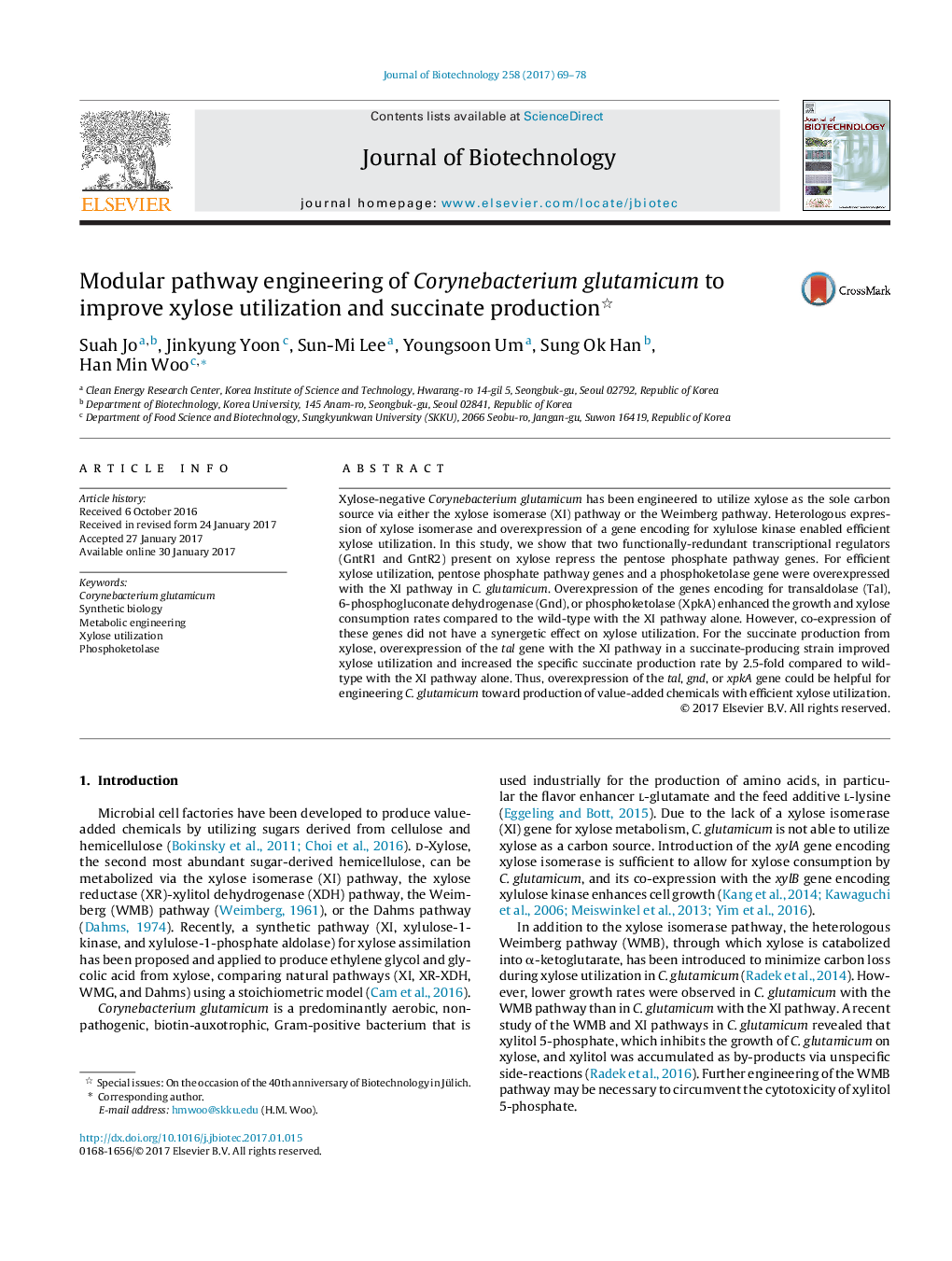| Article ID | Journal | Published Year | Pages | File Type |
|---|---|---|---|---|
| 6452024 | Journal of Biotechnology | 2017 | 10 Pages |
â¢Functional redundancy of GntR1 and GntR2 confirmed in xylose-grown C. glutamicum.â¢Heterologous expression of phosphoketolase enhanced xylose utilization.â¢Overproduction of 6-phosphogluconate dehydrogenase led efficient xylose utilization.â¢Overexpression of the tal gene improved succinate production and xylose utilization.
Xylose-negative Corynebacterium glutamicum has been engineered to utilize xylose as the sole carbon source via either the xylose isomerase (XI) pathway or the Weimberg pathway. Heterologous expression of xylose isomerase and overexpression of a gene encoding for xylulose kinase enabled efficient xylose utilization. In this study, we show that two functionally-redundant transcriptional regulators (GntR1 and GntR2) present on xylose repress the pentose phosphate pathway genes. For efficient xylose utilization, pentose phosphate pathway genes and a phosphoketolase gene were overexpressed with the XI pathway in C. glutamicum. Overexpression of the genes encoding for transaldolase (Tal), 6-phosphogluconate dehydrogenase (Gnd), or phosphoketolase (XpkA) enhanced the growth and xylose consumption rates compared to the wild-type with the XI pathway alone. However, co-expression of these genes did not have a synergetic effect on xylose utilization. For the succinate production from xylose, overexpression of the tal gene with the XI pathway in a succinate-producing strain improved xylose utilization and increased the specific succinate production rate by 2.5-fold compared to wild-type with the XI pathway alone. Thus, overexpression of the tal, gnd, or xpkA gene could be helpful for engineering C. glutamicum toward production of value-added chemicals with efficient xylose utilization.
